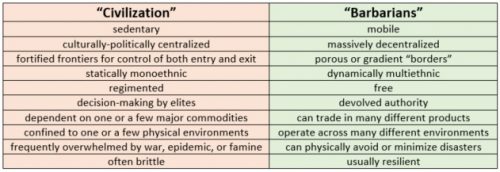A Prophet Without Honor, by Joseph Wurtenbaugh. An outstanding work of alternative history.
It is now known that when Hitler remilitarized the Rhineland in 1936, his forces were under orders to withdraw if faced by serious opposition by the (then-much-superior) French and British militaries. But these countries did not take action, being focused on their economic problems and convincing themselves that the German move wasn’t really much of a threat. But they didn’t know about the Withdrawal Order. What if they had?
Some of the characters are fictional, others are real people imagined as following different trajectories. The central figure is a German officer named Karl von Haydenreich; he has become friends with American officer Dwight Eisenhower and this friendship will prove critical in changing the course of history.
Very well-done, should not be missed.
The Hard Thing About Hard Things, Ben Horowitz. Advice about running a startup from a venture capitalist…the author is cofounder of the VC firm Andreessen Horowitz. A lot of worthwhile points, some of which should be obvious, others not so much so.
Understanding what you did wrong if you hired an executive who did not work out: Horowitz goes through several possible causes of the failure, including this:
You hired for lack of weakness rather than for strengths. This is especially common when you run a consensus-based hiring process. The group will often find the candidate’s weaknesses, but they won’t place a high enough value on the areas where you need the executive to be a world-class performer. As a result, you hire an executive with no sharp weakness, but who is mediocre where you need her to be great.
On excessive focus on quantitative metrics: “Management purely by numbers is sort of like painting by numbers–it’s strictly for amateurs.”
I especially like Horowitz’s emphasis on the importance of organization design, and the point that all such designs are compromises…indeed:
The first rule of organizational design is that all organizational designs are bad. With any design, you will optimize communication among some parts of the organization at the expense of other parts. For example, if you put product management in the engineering organization, you will optimize communication between product management and engineering at the expense of product management and marketing. As a result, as soon as you roll out the new organization, people will find fault with it, and they will be right…Think of the organizational design as the communications architecture for your company. If you want people to communicate, the best way to accomplish that is to make them report to the same manager. By contrast, the further away people are on the organizational chart, the less they will communicate. The organizational design is also the template for how the company communicates with the outside world.
The book was inspired by this thought: “Every time I read a management or self-help book, I find myself saying, ‘That’s fine, but that wasn’t really the hard thing about the situation.'” For example:
The hard thing isn’t hiring great people. That hard thing is when those ‘great people’ develop a sense of entitlement and start demanding unreasonable things…The hard thing isn’t dreaming big. The hard thing is waking up in the middle of the night in a cold sweat when the dream turns into a nightmare.
Fifty Inventions that Shaped the Modern Economy, by Tim Harford. Includes not just the sort of things that would typically show up in an ‘inventions’ list, but also such things as double-entry bookkeeping, tradable debt, the welfare state, and the department store.
Regarding the latter, Harford credits Harry Gordon Selfridge, who worked for Marshall Field, with creating the concept. Key to the new stores was the idea that “just looking” was okay, indeed was to be positively encouraged.
Selfridge swept away the previous shopkeepers’ custom of stashing the merchandise in places where sales assistants had to fetch it for you…he instead laid it out in the open-aisle displays we now take for granted, where you can touch a product, pick it up, and inspect it from all angles, without a salesperson hovering by your side…Shopping had long been bound up with social display: the old arcades of the great European cities, displaying their fine cotton fashions–gorgeously lit with candles and mirrors–were places for the upper classes not only to see but to be seen. Selfridge had no truck with snobbery or exclusivity. (When he opened his London store), His advertisements pointedly made cleaer that the ‘whole British public’ would be welcome–no cards of admission are required.”
Harford also mentions an Irish immigrant to America named Alexander Turney Stewart. It was Stewart who introduced “the shocking concept of not hassling customers the moment they walked through the door. He called this novel policy ‘free entrance.” Stewart also introduced the concept of the clearance sale and established a no-haggle pricing policy for his good.
Discussion of inventions such as the department store provides a useful reminded that so many of the things we take for granted–with ‘things’ including assumptions about ways of doing things as well as tangible objects–haven’t always existed; somebody had to think of them and drive them into reality.
This post to be further continued.
